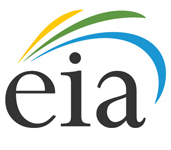 Congress is on vacation until September and while they are spending some time away from Washington, D.C. industries who need a farm bill passed are still working to not only a long-term bill passed, but one that keeps energy programs in tact and with funding. Yet the American Council for an Energy-Efficient Economy (ACEEE) notes that many people don’t really understand what programs are in the bill nor what energy programs the United States Agriculture Department (USDA) oversees and funds to improve the use of renewable energy and energy efficiency.
Congress is on vacation until September and while they are spending some time away from Washington, D.C. industries who need a farm bill passed are still working to not only a long-term bill passed, but one that keeps energy programs in tact and with funding. Yet the American Council for an Energy-Efficient Economy (ACEEE) notes that many people don’t really understand what programs are in the bill nor what energy programs the United States Agriculture Department (USDA) oversees and funds to improve the use of renewable energy and energy efficiency.
This need spurred ACEEE to release a new white paper, Energy Efficiency Opportunities at USDA.” The white paper outlines the main programs at USDA that provide funding that can be used for energy efficiency. Some are more well-known as energy efficiency programs, like the Rural Energy for America Program (REAP) and the Environmental Quality Incentives Program (EQIP). Others haven’t been used for energy efficiency in years. These programs, says ACEEE, make up a toolkit that the energy efficiency community should keep in mind when working in rural areas.
You can access the free white paper here.












